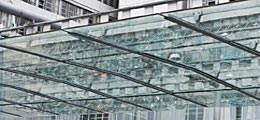CeBiTec Colloquium
Monday, August 15th 2016, 17 c.t.
G2-104, CeBiTec Building
Prof. Dr. Min Jiang
College of Biotechnology and Pharmaceutical Engineering, Nanjing Tech University, Jiangsu, China
Production of C4 dicarboxylic acids from low-grade carbon sources
China’s carbon dioxide emissions exceeded 10 billion tons per year, and produced annual approximately 400 million tons of crop straw and 350 million tons of woody biomass. These low-grade carbon resources can be rational utilized to produce important C4 dicarboxylic acids or biodegradable materials by biotechnology. This is an effective means to control environmental pollution and promote economic sustainable development. Therefore, how to improve bioconversion efficiency to produce bio-based products has become the key problem to be solved. To achieve sustainable production of C4 dicarboxylic acids, a biotransformation system characterized by “lignocelluloses utilization” and “non-photosynthetic CO2 fixation” was constructed with following innovative achievements: 1) cell factories with high efficient low-grade carbon resources utilization capability were constructed by regulating ATP system to drive xylose and CO2 metabolism; 2) high efficient driving of anaerobic target product synthesis was realized by regulating carbon flux based on NAD(H) system; 3) the efficiency of low biomass system was improved and an anaerobic synthesis system with zero CO2 emission was set up by development of extracellular regulation strategies and establishment of continuous anaerobic fermentation processes. Based on above achievements, bio-based organic acid production lines with international advanced levels were built through cooperation with enterprises, which brought prominent benefits. In summary, intracellular NAD(H) and ATP levels are the most important driving force for “lignocelluloses utilization” and “non-photosynthetic CO2 fixation” and the high efficient cell factory for bio-based products manufacturing could be constructed by regulation of these two systems in intracellular or extracellular.
Host: Prof. Volker Wendisch



